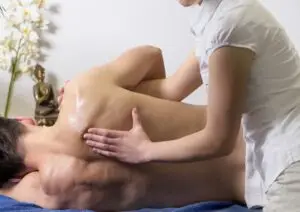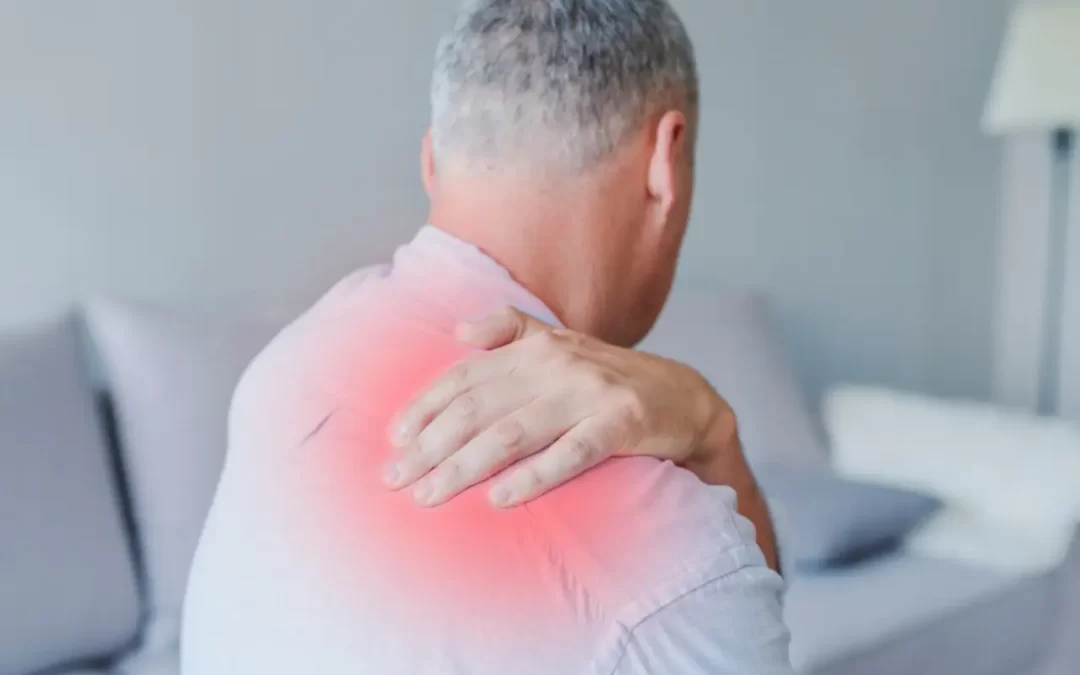The shoulder joint is a ball and socket joint, inherently unstable because the ‘ball’ is big and the ‘socket’ is small and shallow. Only about one-third of the humeral head is in contact with the joint cavity. It permits freedom of movement because the capsule of the shoulder joint is lax. The strong muscles surrounding the joint contribute a great deal to the stability of the joint.
Shoulder pain may arise from the joint itself or from any of the structures around the joint. The pain usually worsens with activities or movement of your arm or shoulder if the pain comes from the joint.
Various heart disease or gallbladder disease, affecting structures in your chest or abdomen, also can lead to shoulder pain. Shoulder ache that arises from the nearby structure is called referred pain. When you move your shoulder, referred pain usually doesn’t worsen.
Arthritis peri (Frozen shoulder) is a common cause of shoulder pain. This is a disease of unknown etiology where the glenohumeral joint becomes painful and stiff because of the loss of resilience of the joint capsule, possibly with adhesions between its folds.
Not all shoulder pain is caused by arthritis peri. It can also cause by ligament injuries, strains, and bone issues.
Common Causes of Shoulder Pain
Arthritis
Torn cartilage
Torn rotator cuff
Swollen bursa sacs or tendons
Bone spurs (bony projections that develop along the edges of bones)
A pinched nerve in the neck or shoulder
Broken shoulder or arm bone
Frozen shoulder
Dislocated shoulder
Injury due to overuse or repetitive use
Spinal cord injury
Heart attack
Treatments for Shoulder Pain
Medical and surgical management
Doctors may recommend NSAIDs to relieve the inflammation, swelling, and pain. If the pain persists for more than weeks and limits your daily activities then they recommend corticosteroid injections, these injections have anti-inflammatory properties. These injections are administered directly to the shoulder joint. These injections have side effects like tenderness and bruising at the injection site.
Treatment options depend on the cause and severity of the shoulder pain. Follow after-care instructions carefully, if you’ve had shoulder surgery.
Rotator cuff repair, total shoulder replacement, Arthroscopy for frozen shoulder, Acromioclavicular joint repair for arthritis, and Arthroscopy for impingement syndrome are the various surgical management of shoulder conditions.
Ayurvedic management
Ayurvedic treatment mainly focuses to eliminate the accumulated toxic substances that cause pain. Massage therapies with herbs, powders, and medicated oils are recommended in ayurvedic treatment.

Yoga
Yoga, a low-impact exercise which means it increases heart rate while minimizing the amount of stress on the joints. It can reduce chronic pain by improving joint mobility, physical fitness, and overall quality of life. This is achieved by changing the psychological, physiological, and behavioral factors.
Homeopathic management
Homeopathic treatment is a holistic method of treatment, medicines can be selected on the basis of cause, location, sensation, modalities, and extension of the pain. For the treatment of shoulder pain, the patient should consult a qualified doctor.
Physiotherapy management & treatment
Physiotherapy management is a non-surgical, side-effect-free method of treatment mainly focusing on the root cause of the condition. Minor shoulder pain can be home treated by applying ice to the shoulder for 15 to 20 minutes; three or four times a day for several days which can help to reduce swelling and pain. Putting ice directly on your skin can cause frostbite and burn the skin so use an ice bag or wrap ice in a towel. Proper rest of the shoulder before returning to normal activity and avoiding any movements can be helpful to reduce pain. Limiting overhead work or activities is essential. Compressing the area with an elastic bandage will reduce swelling.
Patient education is essential to reduce further complications by proper rest and limiting the movement in the affected side. If it is a 6-month-old (acute) case, the patient can take initial pain management by applying ice, and avoiding lying on the affected side. Modalities such as IFT, TENS, Ultrasound, and ESWT are used for pain management. Proper mobilization techniques in manual therapy help to improve the joint range of motion by breaking the capsular tightness. Home exercises are also recommended to make the patient functionally independent.

Extracorporeal Shockwave Therapy (ESWT) is an advanced modality for the treatment of musculoskeletal conditions and its very effective in the treatment of frozen shoulders. Acoustic waves break up the existing capsular tightness. ESWT uses sound waves (high amplitude pulses of mechanical energy) to break up infected tissues and trigger the rapid healing process.
In addition, an advanced modality called Pulsed Cell Repair Therapy (PCRT) is very effective for ligament injuries and calcifications. PCRT directs a series of magnetic pulses through injured tissue. Each magnetic pulse induces a tiny electrical signal that stimulates cellular repair and harnesses the body’s own ability to heal itself. This natural signal indicates the body to repair damaged or worn tissues and to maintain the health and proper functioning of the joint. As a result of aging, injury or disease sometimes, this signal is disturbed. When this occurs, the body is unable to repair the damage own. This ends up in pain, inflammation, and loss of proper function in the joint. PCRT is unique in that it mimics the body’s natural signal, activating the normal healing process and stimulating the growth and repair of the damaged tissue.
If you are experiencing shoulder pain or have been diagnosed with a frozen shoulder, please feel free to reach out to us for a consultation and assessment.

